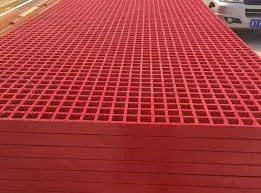
-
 Afrikaans
Afrikaans -
 Albanian
Albanian -
 Amharic
Amharic -
 Arabic
Arabic -
 Armenian
Armenian -
 Azerbaijani
Azerbaijani -
 Basque
Basque -
 Belarusian
Belarusian -
 Bengali
Bengali -
 Bosnian
Bosnian -
 Bulgarian
Bulgarian -
 Catalan
Catalan -
 Cebuano
Cebuano -
 China
China -
 China (Taiwan)
China (Taiwan) -
 Corsican
Corsican -
 Croatian
Croatian -
 Czech
Czech -
 Danish
Danish -
 Dutch
Dutch -
 English
English -
 Esperanto
Esperanto -
 Estonian
Estonian -
 Finnish
Finnish -
 French
French -
 Frisian
Frisian -
 Galician
Galician -
 Georgian
Georgian -
 German
German -
 Greek
Greek -
 Gujarati
Gujarati -
 Haitian Creole
Haitian Creole -
 hausa
hausa -
 hawaiian
hawaiian -
 Hebrew
Hebrew -
 Hindi
Hindi -
 Miao
Miao -
 Hungarian
Hungarian -
 Icelandic
Icelandic -
 igbo
igbo -
 Indonesian
Indonesian -
 irish
irish -
 Italian
Italian -
 Japanese
Japanese -
 Javanese
Javanese -
 Kannada
Kannada -
 kazakh
kazakh -
 Khmer
Khmer -
 Rwandese
Rwandese -
 Korean
Korean -
 Kurdish
Kurdish -
 Kyrgyz
Kyrgyz -
 Lao
Lao -
 Latin
Latin -
 Latvian
Latvian -
 Lithuanian
Lithuanian -
 Luxembourgish
Luxembourgish -
 Macedonian
Macedonian -
 Malgashi
Malgashi -
 Malay
Malay -
 Malayalam
Malayalam -
 Maltese
Maltese -
 Maori
Maori -
 Marathi
Marathi -
 Mongolian
Mongolian -
 Myanmar
Myanmar -
 Nepali
Nepali -
 Norwegian
Norwegian -
 Norwegian
Norwegian -
 Occitan
Occitan -
 Pashto
Pashto -
 Persian
Persian -
 Polish
Polish -
 Portuguese
Portuguese -
 Punjabi
Punjabi -
 Romanian
Romanian -
 Russian
Russian -
 Samoan
Samoan -
 Scottish Gaelic
Scottish Gaelic -
 Serbian
Serbian -
 Sesotho
Sesotho -
 Shona
Shona -
 Sindhi
Sindhi -
 Sinhala
Sinhala -
 Slovak
Slovak -
 Slovenian
Slovenian -
 Somali
Somali -
 Spanish
Spanish -
 Sundanese
Sundanese -
 Swahili
Swahili -
 Swedish
Swedish -
 Tagalog
Tagalog -
 Tajik
Tajik -
 Tamil
Tamil -
 Tatar
Tatar -
 Telugu
Telugu -
 Thai
Thai -
 Turkish
Turkish -
 Turkmen
Turkmen -
 Ukrainian
Ukrainian -
 Urdu
Urdu -
 Uighur
Uighur -
 Uzbek
Uzbek -
 Vietnamese
Vietnamese -
 Welsh
Welsh -
 Bantu
Bantu -
 Yiddish
Yiddish -
 Yoruba
Yoruba -
 Zulu
Zulu
Design and Analysis of a GRP Rectangular Water Storage Tank
Understanding the GRP Rectangular Tank A Comprehensive Overview
GRP (Glass Reinforced Plastic) rectangular tanks have gained prominence across various industrial sectors due to their exceptional durability, lightweight characteristics, and corrosion resistance. These tanks are designed to store and transport liquids and are especially useful in industries such as water treatment, chemicals, food and beverage, and agriculture.
Construction and Materials
The primary material used in constructing GRP rectangular tanks is a composite of glass fibers and resin, which combines the lightweight properties of plastic with the strength of glass. The manufacturing process involves layering glass fibers within a matrix of resin, which is cured to form a solid structure. This method allows for varying thicknesses of the tank's walls, providing the ability to customize the tank based on specific requirements, such as pressure and thermal resistance.
The rectangular design of these tanks is particularly advantageous as it maximizes storage capacity in confined spaces. Unlike cylindrical tanks, which require more floor space for the same volume, rectangular tanks can be easily integrated into existing facilities, optimizing workflow and storage efficiency.
Advantages of GRP Rectangular Tanks
1. Corrosion Resistance One of the standout features of GRP tanks is their resistance to corrosive substances. Unlike metal tanks, which can rust and degrade over time, GRP tanks maintain their integrity even when exposed to aggressive chemicals, reducing maintenance costs and extending the lifespan of the tank.
grp rectangular tank

2. Lightweight GRP tanks are significantly lighter than their metal counterparts, making them easier to transport and install. This reduced weight also contributes to lower shipping costs and the ability to place larger tanks on less robust flooring without the need for additional structural support.
3. Thermal Insulation GRP has excellent thermal insulating properties, making it ideal for storing temperature-sensitive liquids. This is particularly beneficial in industries where the maintained temperature of the stored material is crucial for quality and safety.
4. Eco-Friendly As industries move toward more sustainable practices, GRP tanks offer an environmentally friendly alternative. The materials used can often be recycled, reducing waste and promoting a circular economy.
Applications
Due to their versatility, GRP rectangular tanks are employed in various application areas. In the agricultural sector, they are used for storing water and fertilizers. In water treatment facilities, they hold wastewater and facilitate various processes. Additionally, the food and beverage industry utilizes these tanks to store liquid ingredients in compliance with health and safety regulations.
Conclusion
The GRP rectangular tank stands out as a robust and reliable solution for liquid storage across multiple industries. Its unique combination of lightweight construction, corrosion resistance, and thermal insulation makes it an excellent choice for modern applications. As industries increasingly focus on efficiency and sustainability, the GRP rectangular tank is poised to play a significant role in the evolution of storage solutions, providing a blend of functionality and environmental responsibility. Whether for industrial applications or agricultural uses, these tanks offer a durable and practical choice for various storage needs.
Latest news
-
Exploring the Benefits of Top Hammer Drifter Rods for Enhanced Drilling PerformanceNewsJun.10,2025
-
High-Precision Fiberglass Winding Machine for GRP/FRP Pipe Production – Reliable & Efficient SolutionsNewsJun.10,2025
-
FRP Pipes & Fittings for Shipbuilding - Corrosion-Resistant & LightweightNewsJun.09,2025
-
Premium FRP Flooring Solutions Durable & Slip-ResistantNewsJun.09,2025
-
Premium Fiberglass Rectangular Tanks Durable & Lightweight SolutionNewsJun.09,2025
-
Tapered Drill String Design Guide Durable Performance & UsesNewsJun.09,2025









